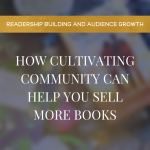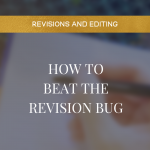
What Should Your Next Step In Authorship Be?
Take the quiz to discover which stage of authorship you’re currently at and a *complete* list of action steps to focus on that will move you to where you want to go.
I remember when I wrote my first book, I had no intention of turning it into a trilogy. My first and only concern was getting the idea onto the page and out into the world. But when I finally finished the book and stopped to rest—I realised that I couldn’t spend time with my characters anymore… and it had this feeling that there was more story to be told.
So, I decided to make it a trilogy. Except, I had no idea what to write about—and furthermore, I hadn’t set my book up to continue for two more books. (Thankfully, it was only the first draft and went through many revisions before it was published, so I was able to change this.)
Sometimes, we don’t set out to write more than one book, but we feel compelled to continue the story. That is our creative flow talking, our imaginations conjuring more ideas than we can keep up with. So if you’re debating whether to write a standalone or a series, let me give you some guidelines to help you make a decision.
1) Are you a new author, or an established author?
As a general rule, writing more than one book is the best way to hit the ground running as a new author, but that doesn’t necessarily mean writing a series is the way to go. There are so many factors that come into play— such as whether the story has enough merit to keep a reader hooked for four or more books, and whether you have the stamina to pace the story over 4+ books.
If you’re an established author who has a good track record with sales and deadlines, you can probably get away with pitching an entire series right off the bat. However, a publishing house will take all these things into consideration when deciding whether to contract you for a series or not. In fact, they might surprise you and ask you to deliberately write a series instead of the standalone you originally pitched.
My advice is to tie up loose ends, as if the first book is the only book that will ever see the light of day, but leave a loophole that creates potential to continue the story. You never know—sales might spike and create that golden opportunity to continue the series.
2) How are you branding yourself?
There are some authors who have created a brand around standalone novels that all have similar themes and issues (such as Fleur Ferris, who had a strong debut with her novel Risk and has gone on to write three more ‘mystery/crime’ based standalones, Wreck, Black, and Found.)
Then, there are other authors who go on to write 6 – 10 books per series and keep a regular theme running, such as Sarah J. Maas (author of the A Court Of Thorns And Roses series and Throne Of Glass series), and Rick Riordan (author of the Percy Jackson and the Olympians series, Heroes of Olympus series, and many more mythology based books).
So take a look at the kind of stories you’re writing, what you want to be known for, and think about whether a series or a standalone can best set you up for sales success. For example, crime novels do very well as standalones, which is why Fleur Ferris has done so well in such a short amount of time, and fantasy readers love the elaborate worlds that take multiple books to create, which creates a demand for series-based plots. You’ll also notice a big trend with fairytale retellings becoming trilogies.
3) What kind of story content are you writing about?
It’s important to look at your story and think about whether a series or standalone is the best route for it. After all, you could follow in the footsteps of established authors and write a series for your fantasy novel just because it’s a ‘trend’, but what if the world you’ve created isn’t set up for multiple books? What if the story is neatly wrapped up in just one book? Is it worth dragging out for the sake of sales?
This is important to consider, because readers will pick up on storylines that have been dragged out for the sake of ‘creating more books’—and this tends to really annoy them.
If the story could have been wrapped up in less time, readers prefer this. As much as they might love your stories and spending time with your characters, their primary goal is to find out how the story ends—and anything preventing that goal which doesn’t add value to the overall story might turn them off the series completely. It would majorly suck if you spent all this time building up to an epic finale, but lost most of your readers halfway through the series, right?
The bottom line: every book needs to be relevant, so if you don’t think you can find a relevant plot for each book, don’t make the series longer than it needs to be.
4) What’s your marketing angle?
The final thing to consider is how you plan to market this series, and whether you feel as if you can do so for the length of your book series.
For example, if you’re writing a trilogy and plan to finish a book a year, that gives readers plenty of time to get around to reading it, and plenty of time for you to tease the release of the next book—keeping the book buzz alive.
If you have a longer series, or you need more time to write each book, you might consider adding a novella between releases to tie readers over until the next instalment comes out. This can be a great marketing hook too, because not all novellas need to be read in conjunction with the series itself—it can be an alternative entry point into the series overall.
Which leads me to my next point: the biggest perk of writing standalones is that you have multiple entry points into your series at any time. A reader can pick up any of your books and become hooked on your writing, then go out and buy all your other work.
But if you have a series, this changes the dynamic completely, because in order to follow the story, readers need to start at book one—and depending on how many books are out, this can be a daunting turn off. After all, a reader’s TBR pile is never ending.
(Marketing tip: trilogies and duologies sell really well because when there’s 2 – 3 books out, this creates sweet spot to hook readers and maximize sales. It means the reader doesn’t have to wait a long time to read the next instalment, but there’s not 5 – 6 books they need to catch up on either. PLUS, standalones can be started and finished at any time, but a series creates the need to ‘hurry up and start reading’ because more books are on the way.)
The final example I want to leave you with today is author Alice J. Black, who is writing a series called the ‘Soul Seekers’ series. What’s interesting about it is that it’s a very long book series that must be read in order, but it’s entirely made up of novellas—creating a journey that can be consumed in bite sized instalments.
This reduces how ‘daunting’ it would otherwise be to start a series so long, because each book is relatively short and quick to consume—plus, it’s being released much faster than a regular series, with books coming out in monthly timespans. Something to think about, if you want to publish multiple books in one year and get them out as fast as possible.
Authors to check out for inspiration:
Stand-Alone Authors:
- Fleur Ferris
- Rainbow Rowell
- John Green
Duology Authors:
- Candace Robinson
- Victoria Schwab
- J. L. Weil
Trilogy Authors:
- A. G. Howard
- N. D. Wilson
- Marie Rutkoski
Series Authors:
- Rick Riordan
- Sarah J. Maas
- Alice J. Black
If you found this post helpful, come follow me over on Instagram and let’s connect!

Pagan Malcolm is a bestselling fiction author, speaker, podcaster and business coach for authors. She helps aspiring authors finish their books, build the foundations for consistent book sales and establish a standout author brand that gets them KNOWN.
| Facebook Group | Instagram | Podcast | Website | Blog |

Pagan Malcolm is a business coach for authors helping writers to leverage the business side of publishing so that they can kickstart profitable writing careers and become established authors. She has been featured in various publications including Writer’s Digest and The Write Life Top 100 Websites For Writers.
You might like…
Free Resource:









